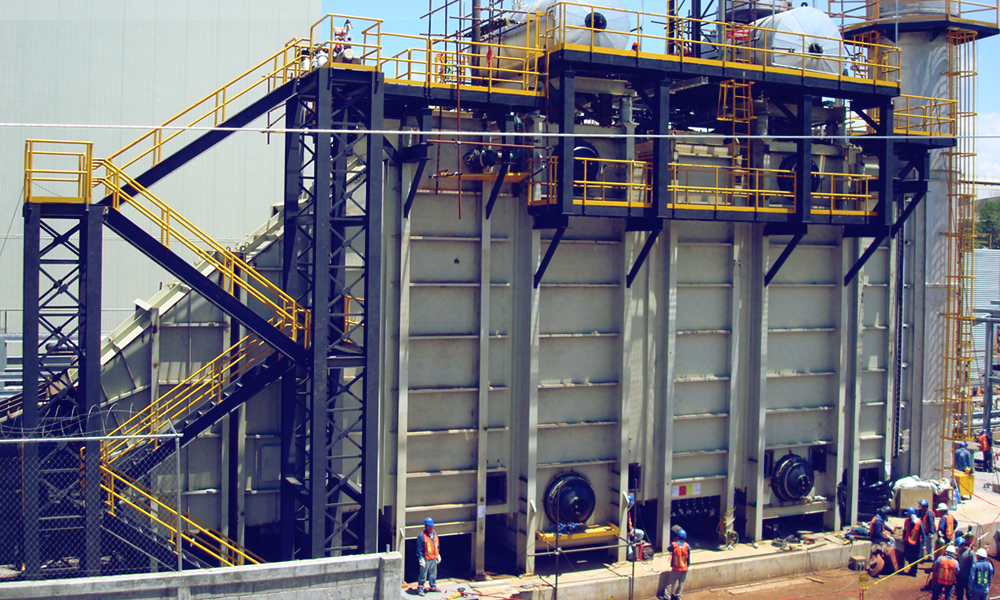
Image Credits: Wikimedia
Bengaluru Scientists Develop Material To Tap Waste Heat Generated By Appliances
Writer: Ankita Singh
A literature lover who likes delving deeper into a wide range of societal issues and expresses her opinions about the same. Keeps looking for best-read recommendations while enjoying her coffee and tea.
Karnataka, 25 Feb 2021 12:04 PM GMT
Editor : Prateek Gautam |
A free soul who believes that journalism, apart from politics, should stand for social cause and the environment.
Creatives : Rajath
A free spirit who find meaning in life with the virtue of creativity and doing job par its excellence, animal lover and traveller by heart.
For instance, the heat released from the laptop can be used to charge a mobile phone, or, the heat released from the phone can be used to charge a small watch.
Taking a significant step towards energy conversion processes, Bengaluru-based scientists have developed a new material that can help tap waste heat produced by all kinds of domestic and industrial appliances. The heat can be later used to accomplish other useful work.
For instance, the heat released from the laptop can be used to charge a mobile phone, or, the heat released from the phone can be used to charge a small watch.
Heavy industrial processes and power plants produce an ample amount of waste heat that can be utilised in performing various other important work. The key to utilising this untapped energy has always been to find an efficient way of converting heat into more convenient electrical energy. This is where Kanishka Biswas and his team come into the picture.
Kanishka Biswas and his team at the Bengaluru-based Jawaharlal Nehru Centre for Advanced Scientific Research claim to have found a new material, Silver Antimony Telluride, that can easily facilitate this energy conversion.
In general, energy conversion is not considered a very efficient process. In the conversion, just a small fraction of the total energy used is productive and the remaining usually gets released as waste heat.
For example, when we burn fuel in automobile engines, only 30 per cent of the total energy is utilised to drive the vehicle. Similarly, in industrial processes, when coal is burnt to boil water in large turbines of the power plants, a large amount of energy is wasted in the form of heat.
The Bengaluru-based scientists have developed a material to tap this waste heat and use it. The waste heat can be tapped, and further, it could be converted into electrical energy.
As of now, this process is highly inefficient as well. In the process of energy conversion, not more than 15 to 20 per cent of the waste heat can be utilised.
The physical phenomenon involved in this process, known as the thermoelectric effect, is simple and known to scientists for more than 200 years.
According to the principles of the thermoelectric effect, if two ends of an electrically-conducting material are maintained at different temperatures, current flows from the hot end towards the cold one. The main problem has always been the facilitation of this transfer of energy.
The scientific fact remains that most materials that conduct electricity also happen to be good conductors of heat. It means that there would not be any significant temperature difference between the two ends of the material for very long.
Traditionally, the thermoelectric effect has been demonstrated and utilised, by using two different metals joined together. It is important to mechanically maintain two different temperatures at the ends. But, such materials do not offer economical solutions. The search remains for finding a material that is a good conductor of electricity yet a bad conductor of heat.
Around two years ago, Biswas and his colleagues had synthesised a compound of Silver, Copper and Tellurium, called Silver Copper Telluride, that showed this property.
Before developing this material, Biswas had also been working on Lead Telluride, another material with a similar property.
Lead is considered to be a common ingredient in many materials that show this property. But because it brings adverse environmental impacts, it was essential to search for materials that are lead-free.
The Silver Copper Telluride showed lesser efficiency than Lead Telluride in the conversion of heat into electrical energy,
But it was considered a significant development because it was environment friendly. The continuous search for a better material has led Biswas and his colleagues to Silver Antimony Telluride which is more efficient in the process of energy conversion.
"There are two factors that facilitate the thermo-electric effect in any material – electrical conductivity and heat conductivity. Electrical conductivity has to be high, while heat conductivity must be low. What we had been able to do with Silver Copper Telluride was to keep its heat conductivity at a very low level. But we could not do anything about the electrical conductivity," said Biswas.
He said that they have gone a step further with the development of Silver Antimony Telluride and mentioned it as a big leap.
He added that they had devised a concept called atomic ordering. In this process, they have doped the material with a dopant that brings in a very high degree of order in its atoms.
Through this concept, they are able to control both the electrical conductivity as well as heat conductivity of the material, he said. Also, Biswas said that now they can optimise the results.
In addition, this concept of atomic ordering can actually be applied to a variety of other materials as well to exploit the benefits of the thermoelectric effect, he said.
Biswas mentioned that the Silver Antimony Telluride significantly outperforms the Silver Copper Telluride, and it is quite exciting right now for them.
The material that they have developed has found to have an efficiency of 14 per cent. Although, after using it in a prototype device, so far, it has been able to achieve 10 per cent efficiency. However, this already is more than any other known material.
This development could turn out to be extremely useful in utilising at least some of the energy that goes entirely waste, and it could be considered a breakthrough in the process of energy conversion.
Tata Steel has already shown interest and is collaborating with Biswas and his team to develop this material for use in its steel manufacturing units, reported The Indian Express.
While talking about the utility of the new material, Biswas said that there were a variety of potential applications.
He added that it was quite useful in large industrial set-ups and they were waiting for more industry partners to check out this new material. He mentioned that there were other places as well where it could be deployed.
He also said that they were working on an international project that explored the possibility of tapping the heat from traditional cooking chulhas to run some electrical appliances in rural households.
 All section
All section














